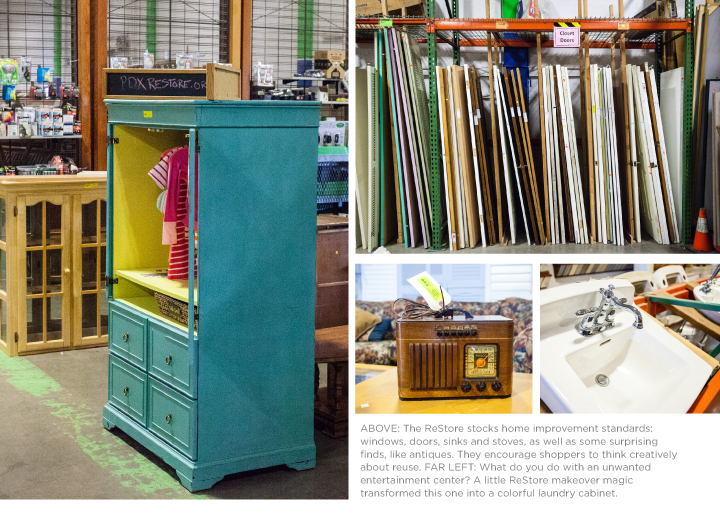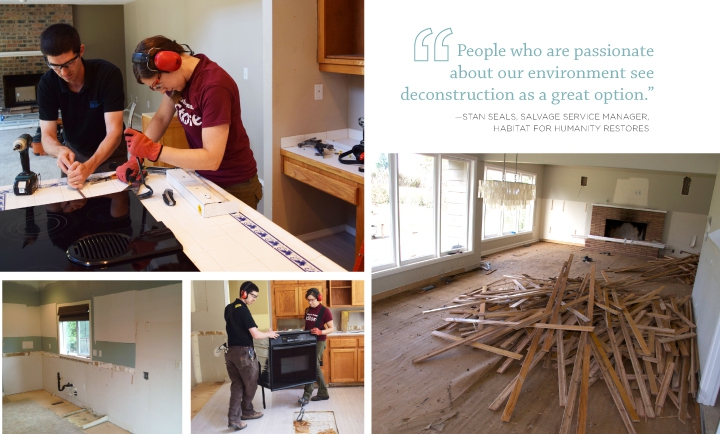The Deconstruction Process
An interview with Habitat for Humanity ReStores
While some would consider the removal of an older home unfortunate, there can be a silver lining—Habitat for Humanity ReStores “de- construct” properties, salvaging high-quality materials—cupboards, vanities, kitchenettes, trim, solid wood doors, and modern light fixtures–that would otherwise have gone straight to the landfill.
“Deconstruction happens because someone involved in a project decides that it is important,” explains Stan Seals, salvage service manager for Habitat for Humanity ReStores. In 2015 alone, Habitat became involved in 185 such projects in the Portland metropolitan area. A homeowner’s decision to deconstruct is sometimes financially motivated, since donated materials can become tax write-offs, and can be emotionally rewarding, too, since preserving the usable parts of a house is often more appealing than demolishing them.
From an environmental perspective, deconstruction trumps even recycling.
“By deconstructing,” Seals says, “you are saving the embodied energy of the material being salvaged and the energy it takes to reproduce that material as a new product. People who are passionate about our environment see deconstruction as a great option for moving up from recycling and into the reduce and reuse sectors, which is ultimately where the most good can be done.”
Once materials are culled from either a kitchen or house, crews load up 16-foot box trucks and deliver items to three area ReStores, where goods are cleaned, processed and put out on the sales floor.
Shopping for Salvage

“Most ReStore shoppers,” says Joe Connell, vice president of retail operations for Habitat for Humanity Portland Metro East, “are homeowners themselves. The stores feature not only building materials but affordable appliances and unique home furnishings. Donated remainders from local retailers are stocked, too. This is a wonderful service for the community,” says Connell.
“A lot of our shoppers are need based and find value in used materials’ original use and adaptive reuse. Artists shop here, too. Our stores are busy, active, engaged places.”
Remarkably, profits from the ReStores go to fund new Habitat homes for low-income families, who personally help build them and can finance their new properties at 0% interest. Last year, after company expenses were paid, Habitat for Humanity ReStore profits totaled $1.2 million, which funded roughly 14 new Habitat homes.
“There is a lot of good research about what happens when you provide a child with a stable home,” says Seals. Families see school grades improve and since the family is involved in the building process, they become engaged, and uniquely invested in the care of their new property.
ReStore shoppers who discover a beautiful door or a sturdy, inexpensive set of maple cabinets can walk away both pleased and reassured that their financial contribution went to help a family.
“All of our products have a story behind them,” says Seals. Customers may not always know what that story is, “but they always get to experience the good feeling of supporting this model and purchasing quality material that still has life in it.”






